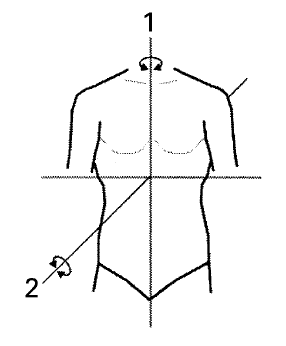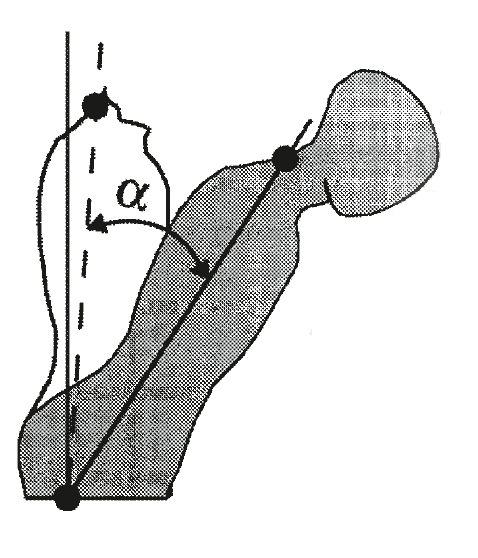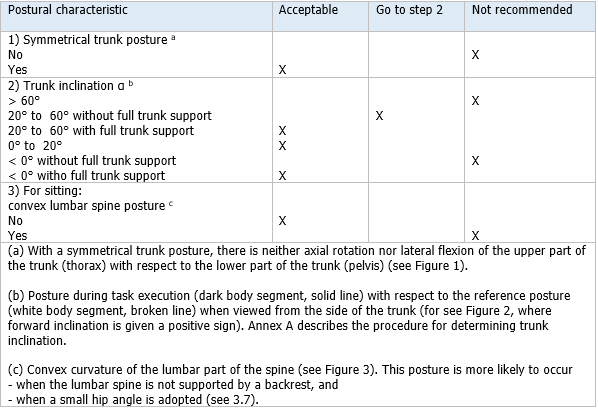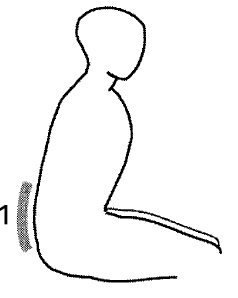UNI ISO 11226:2019 Valutazione delle posture statiche di lavoro
| Appunti Normazione | ||
| 03 Luglio 2025 | ||
| Salve Visitatore | ||
UNI ISO 11226:2019 Valutazione delle posture statiche di lavoro ID 8812 | 21.07.2019 Pubblicata come UNI a Giugno 2019, la norma ISO 11226 tratta delle le posture statiche di lavoro tenendo conto degli angoli assunti dalle varie articolazioni del corpo sia della durata del tempo, Documento completo estratto norma allegato. Le posture statiche di lavoro sono definite dalla ISO 11226 come le posture mantenute per un tempo superiore a 4 secondi. UNI ISO 11226:2019 + Corr. 2006 (Confermata ISO 2018) La norma internazionale stabilisce raccomandazioni di tipo ergonomico per attività lavorative di diverso genere. La norma fornisce indicazioni a coloro che si occupano della progettazione, o della riprogettazione, del lavoro, dei lavori e dei prodotti basate sui concetti di base dell'ergonomia in generale, e, in particolare, alle posture assunte per motivi di lavoro. La norma specifica i limiti raccomandati per le posture statiche di lavoro senza alcuno sforzo o con il minimo sforzo esterno, tenendo conto degli angoli assunti dalle varie articolazioni del corpo sia della durata del tempo. La norma è stata elaborata per fornire una guida sulla valutazione delle variabili delle diverse attività lavorative, che consentisse di valutare il rischio per la salute della popolazione attiva adulta. Le raccomandazioni forniscono una protezione ragionevole per la maggior parte dei soggetti adulti sani. Le raccomandazioni relative ai rischi e alla protezione della salute sono principalmente basate su studi sperimentali riguardanti il carico muscoloscheletrico, il disagio/dolore e la resistenza/fatica legati alle posture di lavoro statico. Il dolore, l'affaticamento e i disturbi dell'apparato muscolo-scheletrico possono derivare da posture lavorative inadeguate. Dolori muscoloscheletrici e affaticamento possono essi stessi influenzare la postura che può aumentare il rischio di errori e può comportare una riduzione della qualità del lavoro o della produzione, nonché rischi situazioni. Un buon design ergonomico è un requisito fondamentale per evitare questi effetti negativi. Questo standard internazionale contiene un approccio per determinare l'accettabilità delle posture di lavoro statico. Il contenuto dello standard si basa sulle attuali conoscenze ergonomiche ed è soggetto a modifiche in base alle ricerche future. Allegato Estratto La UNI ISO 11226 consente di effettuare la valutazione posture statiche di lavoro. Le posture statiche di lavoro sono definite come le posture mantenute per un tempo superiore a 4 secondi. UNI ISO 11226:2019 working posture maintained longer than 4 sec; this applies to slight or non-existant variations around a fixed force level delivered by muscles and other body structures Le parti del corpo umano che possono essere interessati dal mantenimento di posture statiche incongrue sono i seguenti: - il tronco La norma fornisce ai tecnici che si occupano di salute e sicurezza nei luoghi di lavoro un approccio a step per determinare se il rischio derivante dal mantenimento di posture statiche durante l’attività lavorativa possa essere considerato Accettabile o meno. La Procedura Step 1. L’analisi preliminare La valutazione viene svolta, per ogni distretto del corpo interessato, conduce alle seguenti situazioni: Postura accettabile o non raccomandata Il rischio potrà essere considerato accettabile, per la maggior parte della popolazione lavorativa adulta, se le caratteristiche posturali oggetto di analisi per ogni distretto del corpo analizzato rientrano tutte nel giudizio di accettabilità. In caso contrario ci troveremo in una situazione di “postura non raccomandata” oppure, in presenza di situazioni “intermedie”, si dovrà svolgere un ulteriore approfondimento prendendo in considerazione la variabile tempo (vedi step 2). Step 2. L’analisi approfondita (con il fattore tempo) Se la valutazione preliminare (step 1) non consente di determinare la presenza di un rischio accettabile sulla scorta della sola analisi delle geometrie, occorrerà tenere in considerazione anche il fattore tempo. Tale discriminante consentirà di ricondurre la valutazione ad un giudizio di Accettabile o Non raccomandato e concludere la valutazione del rischio. Esempio - Distretto oggetto di valutazione: tronco La norma UNI ISO 11226, alla Tabella 1, per una posizione in piedi, richiede di valutare due aspetti, la simmetria e l’inclinazione del tronco Table 1 - Trunk posture Step 1 La valutazione secondo lo step 1: 1. Simmetria: la postura è da considerarsi simmetrica, in quanto, come già descritto, non c’è alcuna rotazione rispetto ai due assi di riferimento (vedi figura a fianco). 2. Inclinazione del tronco: l’inclinazione di 40° priva di supporto tronco richiede il passaggio allo step 2. Step 2 La valutazione secondo lo step 2: In presenza di un’inclinazione del tronco non supportata, compresa tra 20° e 60°, occorrerà valutare la postura prendendo in considerazione anche il fattore tempo. Table 2 - Holding time for trunk inclination La norma, per il distretto “tronco”, ritiene accettabile la postura se compresa nel range di tempo tra 4′ (inclinazione 20°) e 1′ (inclinazione 60°), come indicato nella figura seguente: Key 1 Maximum acceptable holding time (minutes) Figure 4 - Maximum acceptable holding time vs. trunk inclination Il tempo di mantenimento effettivo dai dati iniziali è 3 minuti è inferiore a 3,5 minuti valutati. Escursus Standards 3 Recommendations 3.1 Introduction Work tasks and operations should provide sufficient physical and mental VARIATION. This means a complete job, with sufficient VARIATION of tasks (for instance, an adequate number of organizing tasks, an appropriate mix of short, medium and long task cycles, and a balanced distribution of easy and difficult tasks), sufficient autonomy, opportunities for contact, information and learning. Furthermore, the full range of workers possibly involved with the tasks and operations should be considered, in particular their body dimensions. With respect to working postures, the work should offer sufficient variation between and within sitting, standing and walking. Awkward postures, such as kneeling and crouching, should be avoided, whenever possible. It is stressed that measures meant to induce variations of posture should not lead to monotonous repetitive work (for more information, refer to [4] in the Bibliography). 3.2 Evaluation procedure The approach described below can be used to determine the acceptability of static working postures. The evaluation procedure considers various body segments and joints independently in one or two steps. The first step considers only the body angles (recommendations are mainly based upon risks for overloading passive body structures, such as ligaments, cartilage and intervertebral disks). An evaluation may lead to the result “acceptable”, “go to step 2” or “not recommended”. An “acceptable” evaluation result means that a working posture is acceptable only if VARIATIONS of posture are also present (see 3.1). In any eventuality, every effort should be made to obtain a working posture closer to the neutral posture, if this is not already the case. NOTE 1 The concept “reference posture” is used for determination of working postures (see 3.3). NOTE 2 Only those extreme joint positions that are most commonly found in practice are mentioned. 3.3 Determination of working postures There are various ways to determine working postures, e.g. observation, photography/video, 3-dimensional optoelectronic or ultrasound measuring systems, body-mounted measuring devices such as inclinometers and goniometers. The appropriate method depends, amongst other things, on the accuracy of determination required by the evaluation. In most cases, direct observation (without measuring systems/devices) will do. However, for more precise determination of working postures, measuring systems/devices may be necessary (for an overview and detailed descriptions, see [5] in the Bibliography). Informative annex A describes the procedure for determining particular posture parameters appearing in 3.4 to 3.7, i.e. trunk inclination, head inclination, neck flexion/extension, upper arm elevation, and extreme joint positions. 3.4 Trunk posture 3.4.1 Step 1 Trunk posture should be evaluated by considering items 1, 2 and 3 in Table 1. Item 3 refers only to sitting. 3.4.2 Step 2 The holding time for trunk inclination is evaluated using Table 2. It is recommended to provide adequate recovery time following the holding time for a certain trunk inclination. Informative annex B provides recommendations for evaluating holding time/recovery time regimes based on endurance data. Table 1 - Trunk posture Key Figure 1 - Trunk posture (axial rotation/lateral flexion of thorax vs. pelvis) Figure 2 - Trunk inclination Key Figure 3 - Convex lumbar spine posture Table 2 - Holding time for trunk inclination Key 1 Maximum acceptable holding time (minutes) Figure 4 - Maximum acceptable holding time vs. trunk inclination Table 3 - Head posture Key 1 Axial rotation Figure 5 - Neck posture (axial rotation/lateral flexion of head vs. thorax) NOTE The straight lines are not lines of sight, but lines through the points used for measurement. Figure 6 - Head inclination 3.6 Upper extremity posture 3.6.1 Shoulder and upper arm posture 3.6.1.1 Step 1 Shoulder and upper arm posture should be evaluated by considering items 1, 2 and 3 in Table 5 for both sides of the body. 3.6.1.2 Step 2 The holding time for upper arm elevation is evaluated using Table 6. It is recommended to provide adequate recovery time following the holding time for a certain upper arm elevation. Informative annex B provides recommendations for evaluating holding time/recovery time regimes based on endurance data. 3.6.2 Forearm and hand posture Forearm and hand posture should be evaluated by considering items 1, 2 and 3 in Table 7 for both sides of the body. 3.7 Lower extremity posture Lower extremity posture should be evaluated by considering items 1, 2, 3 and 4 in Table 8 for both sides of the body. Item 3 refers only to standing (except when using a buttock rest). Item 4 refers only to sitting. Special consideration should be given to - an even distribution of the body weight over both feet when standing or using a buttock rest, For the hip angle in Figure 12, refer to 3.1. Table 5 - Shoulder and upper arm posture Key 1 Raised shoulder Figure 8 - Shoulder and upper arm posture Figure 9 - Upper arm elevation Table 6 - Holding time for upper arm elevation Key 1 Maximum acceptable holding time (minutes) Figure 10 - Maximum acceptable holding time vs. upper arm elevation segue in allegato Certifico Srl - IT | Rev. 00 2019 Collegati |
||
|
|
||
 |
||
| www.certifico.com
è un sito di INVIO NEWSLETTTER Se vuoi cancellarti dall'invio della newsletter oppure effettua il login al sito ed entra nella Tua Area Riservata, in “Modifica dati” agisci con la spunta sul box di selezione “Newsletter”. L'Elenco completo di tutte le ns newsletter è qui: Archivio newsletter. |
||
  |
||
| Certifico Srl 2000-2019 | VAT IT02442650541 | ||

















































